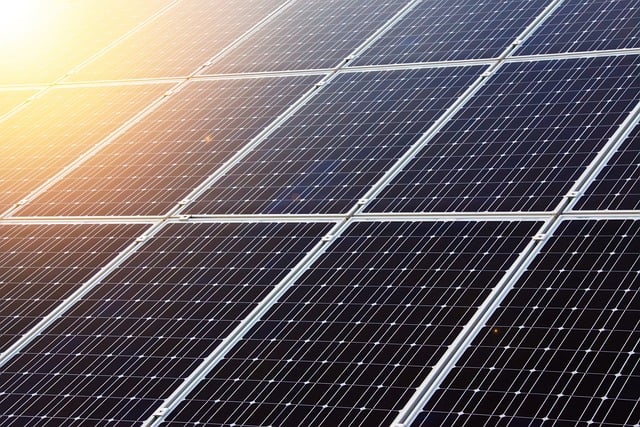The Invisible Revolution: How Sustainable Energy is Changing Our Lives
In the early 21st century, humanity stands at the precipice of a new era characterized by profound shifts in how we produce, consume, and think about energy. This transformation, often referred to as the “invisible revolution,” is rooted in sustainable energy practices that are not only reshaping industries and economies but also redefining our day-to-day lives. The shift towards sustainable energy encompasses various technologies, policies, and practices aimed at reducing environmental impacts and promoting cleaner alternatives. This article explores the multifaceted ways sustainable energy is changing our lives, from the micro to the macro scale, and examines the societal implications of this revolutionary transition.
The Shift to Renewable Energy Sources
One of the primary drivers of the invisible revolution is the shift away from fossil fuels towards renewable energy sources such as solar, wind, hydroelectric, and geothermal power. Fossil fuels have long dominated the global energy landscape, but their environmental drawbacks—high greenhouse gas emissions, pollution, and finite availability—have sparked a global movement towards cleaner alternatives. Today, as technology advances and awareness increases, renewable energy is becoming more accessible and cost-effective.
Solar energy, for instance, has gained immense traction over the past decade. The widespread adoption of solar panels has democratized energy production, allowing individuals and businesses to generate their own electricity. Homeowners can offset their energy bills by harnessing the power of the sun, while enterprises are increasingly investing in solar farms to secure long-term energy savings and showcase their commitment to sustainability.
Similarly, wind energy has seen exponential growth, particularly in regions with vast open spaces and favorable wind patterns. Wind turbines have become a common sight on landscapes, transforming not only rural economies but also contributing to job creation in manufacturing, installation, and maintenance sectors. The involvement of communities in wind projects has fostered local engagement and investment in sustainable practices, further propelling the invisible revolution.
Energy Efficiency and Technological Advancements
The invisible revolution encompasses not only the sources of energy but also how we utilize it. Technological advancements have played a pivotal role in enhancing energy efficiency across various domains, from residential buildings to industrial processes. Smart technologies, in particular, have revolutionized how we manage energy consumption.
Home automation systems, equipped with smart thermostats, energy-efficient appliances, and real-time energy monitoring, enable consumers to optimize their energy usage. These systems facilitate a deeper understanding of energy consumption patterns, allowing individuals to make informed decisions that result in significant cost savings and reduced environmental impact. As more households adopt these efficiencies, the cumulative effect is substantial, reducing overall demand for energy and consequently determining a need for fewer fossil fuels.
In the industrial sector, innovations in energy management systems help organizations reduce waste and improve productivity. Technologies that monitor and control energy use can lead to operational efficiencies and significant reductions in carbon footprints. As businesses recognize the financial and ethical imperatives of sustainable practices, they are increasingly adopting energy-efficient technologies, resulting in an ever-greater contribution to the invisible revolution.
The Societal Impact of Sustainable Energy
The transition to sustainable energy goes beyond economics and technology; it fundamentally alters societal structures and cultural norms. Communities worldwide are experiencing the benefits of local energy production, which fosters energy independence and resilience. By investing in renewable energy infrastructures, regions can become less reliant on imported fuels, decreasing vulnerability to geopolitical tensions and market fluctuations.
The democratization of energy production also empowers individuals and local communities. When people engage in energy systems, they foster a sense of ownership and responsibility, which can galvanize participation in broader sustainability initiatives. The development of community solar projects, for instance, encourages collective investment and shared benefits among participants, creating social bonds and community cohesion.
Moreover, the invisible revolution has profound implications for social equity. It is essential that as we transition to sustainable energy, we do so with the goal of ensuring equitable access for all. Historically, marginalized communities have been disproportionately affected by the adverse impacts of fossil fuel extraction and pollution. A focus on sustainable practices can help alleviate these disparities by providing clean energy solutions that are affordable and accessible, thereby promoting environmental justice.
Climate Change Mitigation and Global Policy Trends
As the effects of climate change become increasingly evident, the role of sustainable energy in mitigating its impacts cannot be overstated. International agreements like the Paris Agreement underscore the global recognition of the urgent need to transition away from fossil fuels. Countries worldwide are committing to lower carbon emissions, invest in renewable energy infrastructures, and develop innovative climate policies.
This commitment extends beyond governments and is mirrored by individuals and organizations. Corporations are setting ambitious sustainability goals, striving for carbon neutrality, and seeking to transform their business models in alignment with sustainable practices. The race toward renewable energy is no longer just a policy initiative—it has become a market imperative that reflects consumer demand for greener products and services.
As technology continues to evolve, new avenues for sustainable energy generation and storage will emerge. Developments in battery technology, for example, are vital for addressing the intermittent nature of renewable sources like solar and wind. By improving energy storage capabilities, we can harness excess energy during peak production and utilize it in times of high demand, thereby optimizing energy efficiency and reliability.
The Future of the Invisible Revolution
Looking ahead, the invisible revolution promises to redefine not only the energy landscape but also our way of life. Transitioning to sustainable energy will require collective passion, collaboration, and innovation across multiple sectors. The roles of individuals, businesses, and policymakers will all be critical in shaping this future.
Education and awareness will play a crucial role in propelling the invisible revolution forward. By empowering individuals with knowledge about sustainable practices, energy efficiency, and the impacts of their choices, we can cultivate a culture of sustainability that resonates across generations. Schools, organizations, and communities can collaborate to develop educational programs that highlight the importance of sustainability and inspire collective action.
Furthermore, fostering partnerships between the public and private sectors will unlock potential solutions that can deliver sustainable energy at scale. Collaborations that innovate and invest in renewable technologies can enhance resilience and secure a brighter future—a future in which energy is abundant, clean, and accessible for all. Together, we can harness the invisible revolution to create a more sustainable world for generations to come.
Conclusion
The invisible revolution represents a monumental shift towards a more sustainable future. In how we produce, consume, and think about energy, we are witnessing a fundamental transformation that carries far-reaching implications for our lives and the planet. As we harness the power of renewable energy and embrace energy efficiency, we can mitigate the adverse impacts of climate change, promote social equity, and cultivate stronger, more resilient communities. The path ahead is filled with challenges, yet it also offers unparalleled opportunities to revolutionize our world for the better. Together, we can turn the tide towards a sustainable energy future and embrace the invisible revolution that is changing our lives.



